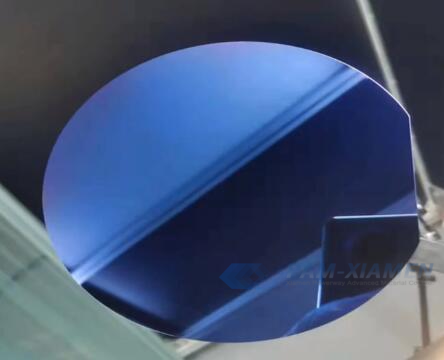Low temperature grown (LTG) gallium arsenide (GaAs) thin-film on GaAs substrate is available for photodetctors and photomixers. In addition, we can supply gaas epi wafer, for more GaAs thin film wafer please view https://www.powerwaywafer.com/gaas-wafers/gaas-epiwafer.html. LTG-GaAs is GaAs grown at a low temperature of 250-300 degrees Celsius using MBE. LT-GaAs has a sub-picosecond carrier lifetime and high resistance after annealing, with a resistivity of 107Ω*cm, which can prevent the formation of oxides and prevent the pinning effect of the metal-semiconductor interface. Moreover, low temperature grown gallium arsenide thin film has high breakdown electric fields and relatively large mobility. These properties make LT-GaAs one of the preferred materials for fast and sensitive various optoelectronic devices, such as photodetectors and photoemixers. For more GaAs thin film data sheet, please refer to the table below:

1. LT GaAs Thin Film Grown for Photodetectors and Photomixers
PAMP16051-LTGAAS
| Layer Material | Thickness | Note |
| LT GaAs | Can do with short life time <1ps | |
| AlAs | 500nm | |
| 2” GaAs Substrate |
Note:
Compared with GaAs, AlAs layer has higher lattice constant, which enables the growth of LT-GaAs with larger lattice constant. The photocurrent generation in low-temperature grown GaAs can be significantly improved by inter-insertion growth of AlAs. The AlAs layer allows more arsenic to be incorporated into the LT GaAs layer, preventing current diffusion into the GaAs substrate.
2. Development of Optoelectronic Devices Fabricated on LTG GaAs Film
Marsch reported the fabrication and high-frequency performance of free-standing LT GaAs-based photoconductors and photomixers. The photoresponse of the devices showed transient electrical effects with a width of 0ps~55ps and an amplification voltage of 1.3V.
Malooci reported LTG GaAs as a waveguide optical mixer in mmWave and THz applications.
Mayorga uses LTG CaAs absorption to mix two (near-infrared) lasers to produce high-frequency signals, which can be used as reference signals for THz bulk oscillators for applications such as ALMA (Atacama Large Millimeter Aray Research Project).
Wingender used an optical mixer made of LT GaAs thin film fabrication to create a steady-state diode laser with optical feedback.
Han Qin et al. fabricated a GaAs-based 1. 55um resonator-enhanced (RCE) photodetector by using LTG GaAs material as a light absorption layer, and analyzed and studied its photoelectric properties. The dark current of the device is 8.0x 10-12A; the peak wavelength of the photocurrent spectrum is 1563nm; the half-width of the response spectrum is 4nm, with good wavelength selectivity.
The main applications and research progress of LT GaAs epilayer in optoelectronic devices are briefly introduced, which are very meaningful for improving the performance of LT GaAs thin film devices. When the device enters the sub-micron level, unalloyed ohmic contact can be formed, avoiding the heat treatment process of ohmic contact for the device, and the efficiency and performance of the device will also be greatly improved. It’s believed that LT-GaAs will become an indispensable information functional material in GaAs-based devices in the near future.
Remark:
The Chinese government has announced new limits on the exportation of Gallium materials (such as GaAs, GaN, Ga2O3, GaP, InGaAs, and GaSb) and Germanium materials used to make semiconductor chips. Starting from August 1, 2023, exporting these materials is only allowed if we obtains a license from the Chinese Ministry of Commerce. Hope for your understanding and cooperation!
For more information, please contact us email at victorchan@powerwaywafer.com and powerwaymaterial@gmail.com.

